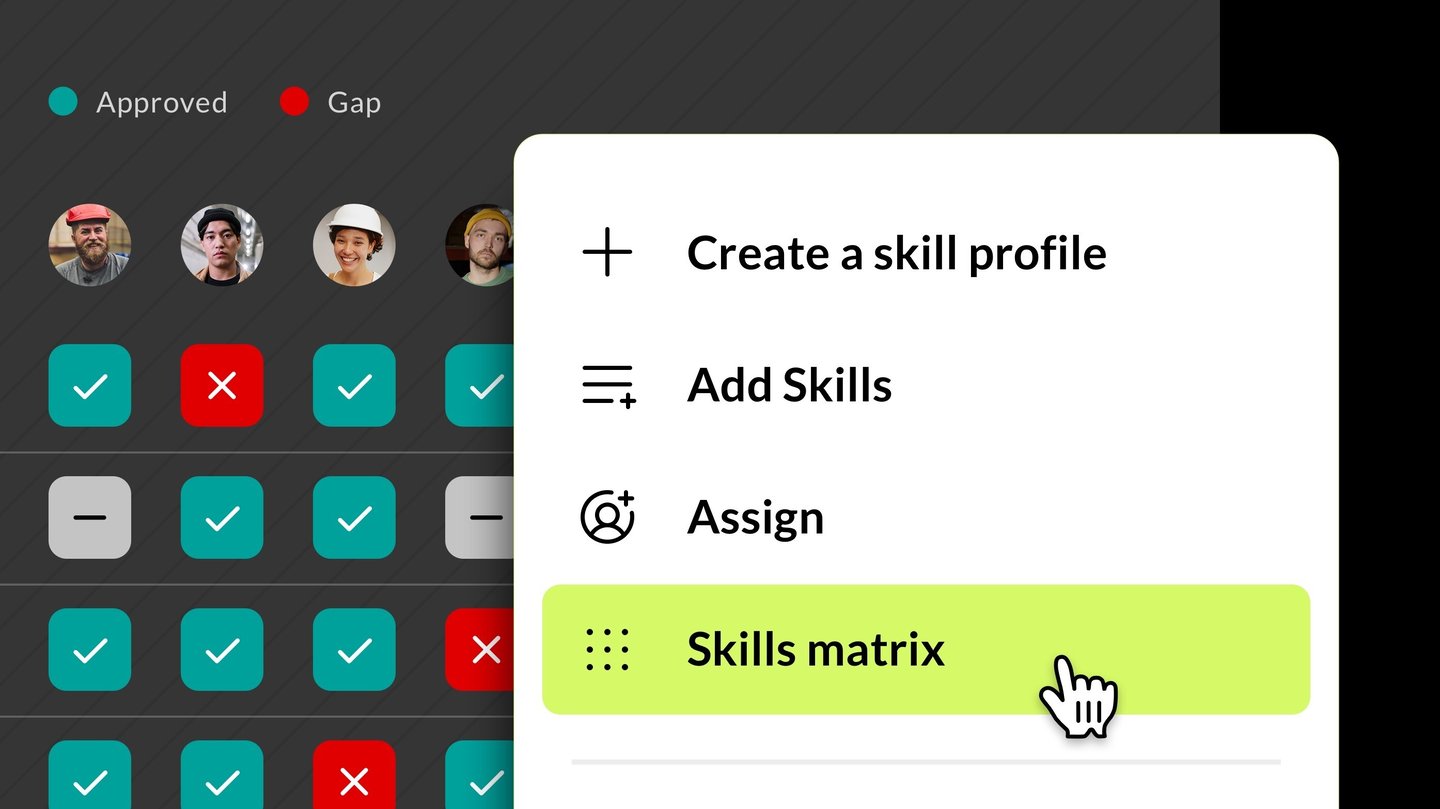

How to get the most out of your Training Matrix [example]
Here are the most important aspects of setting up a training matrix designed for dynamic skills management at the frontline. We've also included a detailed example video explaining the process.
Here's how to best use a training matrix.
For operators and frontline workers, this means a very clear overview of the skills they need to be successful in their roles.
For managers and trainers, they get a clear and dynamic picture of the skill levels of their teams to identify (and close) gaps, deliver optimized training materials, and identify opportunities for continuous improvement.
Below, we'll outline several examples of how to set up a digital training matrix for the frontline.
1. Define skills and create a skill profile.
Defining roles and assigning learning activities.
The first step in creating an effective training matrix is to clearly define the skills needed to do a job.
Once these skills are defined, you can connect them with learning activities. These are training materials that will educate and reinforce the skills needed to perform the task.
These often take the form of work instructions and SOPs, but can also include videos, eLearning activities, and links to other on-the-job training resources.
Example: Connecting a digital SOP for a lock-out-take-out procedure that will teach the process step by step.

Here's an example of a digital work instruction illustrating a step in a lock-out-take-out procedure.
Creating a skill profile.
After outlining all of the skills and learning activities relevant for a job or a production line, it's essential to group them in a relevant way so that frontline teams can access the relevant information in one place.
💡 Having skill profiles available for different areas of your production environment allows you to:
- Assign learning content that's tied to the work that they .
- Upskill, reskill, and cross-train employees on all of the skills they need to excel at multiple jobs.
- Monitor performance and competency based on the task at hand.
Assigning skill levels.
This is an essential step!
After you've defined skills and grouped them into a profile, you'll need to clearly define the required level of proficiency for each task.
Requiring skill levels allows you to close skills gaps, assign relevant training, and understand the skill levels of your team at a glance once they're in your training matrix.

Assigning the relevant skill level is a critical component of a successful training matrix.
2. Assign the skill profile to a team.
Skills management tools need to scale, plain and simple.
A skills management platform should have the capability to assign these skills profiles to any team that performs the task at hand. This way, any production site within an organization can use this framework to train their staff and close skills gaps.
For organizations with global value or distributed value chains, it's especially important that training matrices (and the skills profiles they contain) can be used effortlessly across any sites that share machinery and processes.
3. Managing skills and closing skills gaps.
Training matrices are powerful for two key reasons:
1. They're visual.
A well-made training matrix will allow a supervisor to identify a skills gap or a training opportunity at a glance.
Example: In the visual below, skills gaps for individual skills are marked in red within the matrix - indicating that the employee has not assessed to the required level.

Skills gaps should be immediately identifiable with visual cues. Here they're clearly marked in red.
2. They're personalized.
Digital training matrices allow you to create individualized skills profiles for each and every employee. Here you can track their progress and intervene with relevant opportunities for development.

Individualized skills profiles allow you to facilitate more meaningful and practical skills development.
3. They're always up to date.
One of the biggest headaches surrounding training and skills matrices created in excel and other tools - they're nearly impossible to keep consistently up to date. Even if a training manager manages to stay on top of the manual work, it's an incredibly time-intensive process.
A digital training matrix will instantly update according to the data provided by skills assessments - keeping this a dynamic and accurate tool for skills management and development.
Want more skills content?
👉 Here's how to train based on competency, not job titles.
👉 Here's a great free template to help coordinate employee development.
👉 Here's a breakdown of reskilling vs. upskilling (and the importance of each) at the frontline.
Author
Revisions
It's time to simplify frontline training
Work instructions, checklists, and skills management - all in SwipeGuide
- Cut training time by 50%
- SOC I and II compliant
Get to know us
SCHEDULE YOUR DEMOResources
-
1
How to empower your frontline with better instructional design. -
2
How to gain the edge in Industry 4.0 with smart manufacturing practices. -
3
How to make excellent digital work instructions. -
4
How to deliver continuous improvement at the frontline with Lean principles. -
5
How to capture, share, and improve expert knowledge with digital SOPs.


